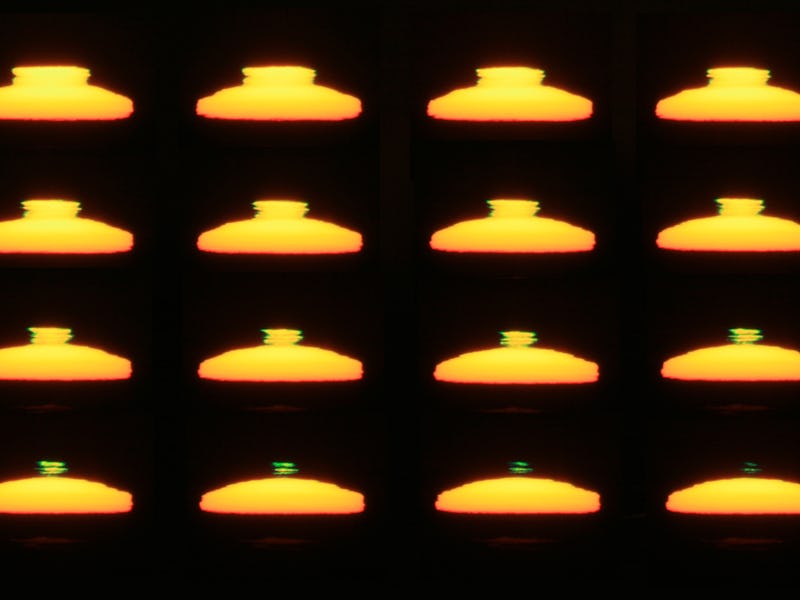What Is the Green Flash? Scientists Still Aren't Totally Sure
That eerie flare sailors see on the horizon isn't a weird explosion going off — it’s a trick of the eye.

When sailors watch the sun dip under a flat horizon, they sometimes see — just at the last second — a green flash. This phenomenon is known as “Green Flash” and it takes place in an instant. Coastal people and boat people spend a lot of time trying to glimpse this beautiful, fleeting light, so what the hell is it?
Green flashes are basically an optical trick caused by the Earth’s atmosphere, which works like a weak prism. Remember, the air is actually an accumulation of different particles — gases like oxygen and nitrogen, aerosols like water, dust, and organic material. Together, all of this matter causes the light to become scattered and refract into different colors as it moves through the atmosphere.
Green flash in Santa Cruz, California
Still, you might expect to see a blue flash since blue tends to get refracted the most. But, in the case of a sunrise or sunset, blue is scattered beyond the line of sight. What’s leftover is green, so that’s what we end up seeing. On clear days with clean air, you can expect to see a more stable, more ebullient green flash.
There are actually four variations of green flashes that one might see. The first is the ‘interior-mirage flash’, that looks like a flattened oval, and most often appears when the surface is warmer than the air above it (so it’s best observed when you’re at sea level). This is also called ’Joules’ last glimpse’: in 1869, the English physicist James Prescott Joule wrote a note that described a green flash as manifesting “at the moment of the departure of the sun below the horizon, the last glimpse is coloured bluish green.”
Cloud-top green flash in San Francisco, California.
The second type of green flash is the “mock-mirage flash,” where the green color seems to be a thin pointy strip at the top rim of the sun. This occurs when the surface is actually colder than the air above and better seen at higher elevations.
Another green flash, the “sub-duct flash,” occurs when the upper part of the sun inexplicably turns green for almost a dozen or so seconds. This also occurs when the surface is colder than the air. A sub-duct flash is best observed at a specific, narrow height interval just below an atmospheric duct, but this can happen at any height.
Mock mirage sunset sequence with green flash, in San Francisco.
The last type of flash is the “green ray.” A green beam of light shows up just before the sun rises or immediately after the sun goes down, and lasts for several seconds. You need to be in a hazy environment at sea level to see green rays flying around.
The last two are extremely rare to experience — they only make up one percent of green flash reports. Moreover, green flash is still a strange, poorly understood phenomenon — it’s very hard to study, and since there’s no known practical implication to learning more, it’s just kind of a weird thing we don’t completely understand.
Complex mock mirage with green flash, in San Francisco.